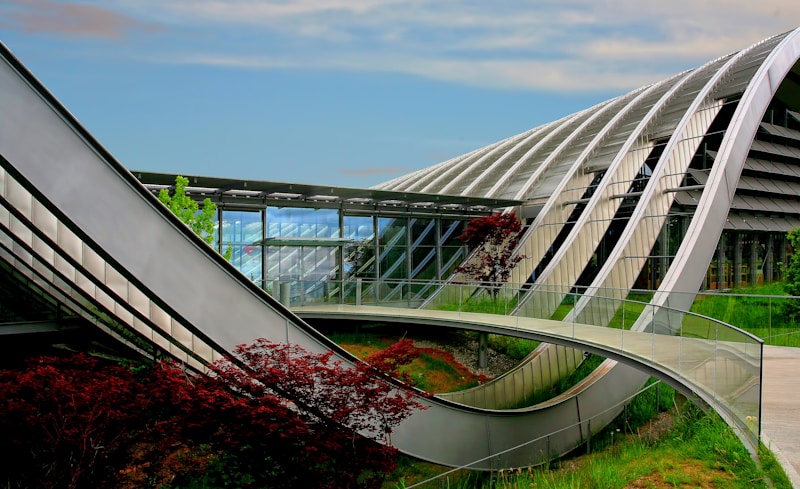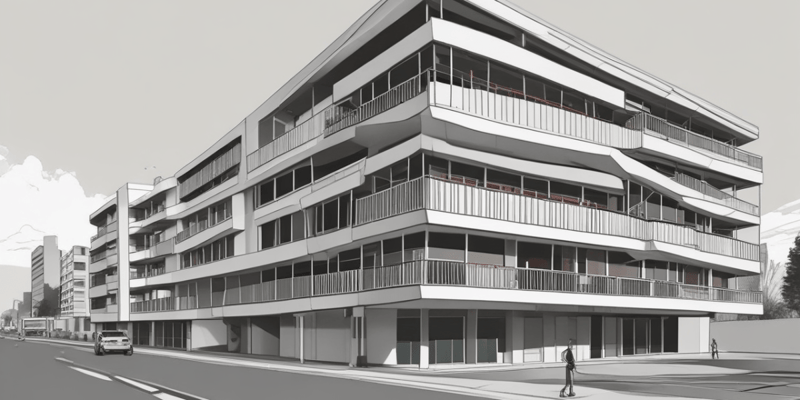Questions and Answers
What is the purpose of a multiple choice question generator?
To provide multiple choice questions
What should be the focus of the questions and answers in a multiple choice question generator?
Testing common misunderstandings
What is the purpose of distractors in a multiple choice question?
To test common misunderstandings
What type of answer options should be avoided in a multiple choice question?
Signup and view all the answers
What is the purpose of including additional context in a multiple choice question?
Signup and view all the answers
What is the most important aspect to focus on when creating a multiple choice question?
Signup and view all the answers
What is the benefit of using a multiple choice question generator?
Signup and view all the answers
What should be the focus of distractors in a multiple choice question?
Signup and view all the answers
What should be the focus of the correct answer in a multiple choice question?
Signup and view all the answers
Study Notes
The Life and Work of Le Corbusier
-
Le Corbusier was a Swiss-French architect, designer, painter, urban planner, and writer who is considered a pioneer of modern architecture.
-
He designed buildings in Europe, Japan, India, and North and South America and was a founding member of the Congrès International d'Architecture Moderne (CIAM).
-
Le Corbusier prepared the master plan for the city of Chandigarh in India and contributed specific designs for several buildings there, especially the government buildings.
-
Seventeen projects by Le Corbusier in seven countries were inscribed in the list of UNESCO World Heritage Sites as The Architectural Work of Le Corbusier, an Outstanding Contribution to the Modern Movement.
-
While Le Corbusier was dedicated to providing better living conditions for the residents of crowded cities, some of his urban planning ideas have been criticized for their indifference to pre-existing cultural sites, societal expression and equality.
-
Le Corbusier designed well-known furniture such as the LC4 Chaise Lounge Chair and the ALC-3001 chair, both made with leather with metal framing.
-
Le Corbusier lacked formal training as an architect but was attracted to the visual arts and attended the municipal art school in La-Chaux-de-Fonds which taught the applied arts connected with watchmaking.
-
In 1914–15, he designed the Dom-Ino House, which proposed an open floor plan consisting of three concrete slabs supported by six thin reinforced concrete columns, with a stairway providing access to each level on one side of the floor plan.
-
In August 1916, Le Corbusier received his largest commission ever, to construct a villa for the Swiss watchmaker Anatole Schwob. He was given a large budget and the freedom to design not only the house but also to create the interior decoration and choose the furniture.
-
Between 1918 and 1922, Le Corbusier did not build anything, concentrating his efforts on Purist theory and painting. In 1922, he and his cousin Pierre Jeanneret opened a studio in Paris at 35 rue de Sèvres.
-
Le Corbusier proposed a three-floor structure called Maison Citrohan, with a double-height living room, bedrooms on the second floor, and a kitchen on the third floor.
-
Le Corbusier and Jeanneret left the interior aesthetically spare, with any movable furniture made of tubular metal frames. Light fixtures usually comprised single, uninterrupted banks of windows.Le Corbusier's Contributions to Modern Architecture
-
Le Corbusier advocated his new concepts of architecture and urban planning in a series of polemical articles published in L'Esprit Nouveau in 1922 and 1923.
-
He presented his plan for the Ville Contemporaine, a model city for three million people, at the Paris Salon d'Automne in 1922.
-
In 1923, he published his first and most influential book, Towards an Architecture, presenting his ideas for the future of architecture.
-
Le Corbusier built the Esprit Nouveau Pavilion, built for the 1925 Paris International Exhibition of Modern Decorative and Industrial Arts.
-
The pavilion represented his idea of the future urban housing unit, and it exhibited a model of his 'Plan Voisin', his provocative plan for rebuilding a large part of the center of Paris.
-
Le Corbusier's Villa Savoye (1928–1931) became one of the most famous of his works and an icon of modernist architecture.
-
The house is an elegant white box poised on rows of slender pylons, with the bedrooms and salons of the house distributed around a suspended garden.
-
Le Corbusier entered the competition for the construction of a headquarters for the League of Nations in Geneva in 1926 with a plan for an innovative lakeside complex of modernist white concrete office buildings and meeting halls.
-
He was commissioned by a Bordeaux industrialist, Henry Frugès, in 1926 to build a complex of worker housing, the Cité Frugès, at Pessac, a suburb of Bordeaux.
-
In 1928, Le Corbusier took a major step toward establishing modernist architecture as the dominant European style by founding CIAM (International Congresses of Modern Architecture).
-
The Athens Charter was created by CIAM in 1933, which outlined the principles of modern urbanism and became a major influence on urban planning in the 20th century.Le Corbusier: Life and Works
-
Le Corbusier played a major role in the establishment of the Congrès Internationaux d'Architecture Moderne (CIAM) in 1928. The CIAM aimed to establish a common style for modern architecture.
-
Members of the CIAM included Le Corbusier, Mies van der Rohe, Walter Gropius, and Adolf Loos, among others. The Athens Charter, a text on how modern cities should be organized, was published in 1943 and became influential for city planners in the 1950s and 1960s.
-
Le Corbusier designed a variety of buildings, including the headquarters of the Tsentrosoyuz for the Soviet government, the Cité de Refuge and the Swiss Pavilion in the Cité Universitaire in Paris, and the Immeuble Clarté in Geneva.
-
Le Corbusier's plan for the Ville Contemporaine, a city of three million inhabitants, and his Plan Voisin, which proposed the demolition of central Paris to build sixty-story office towers surrounded by parkland, were met with shock and never realized.
-
Le Corbusier continued to work on variations of the Plan Voisin, including his vision for Rio de Janeiro and Algiers, but they were never realized.
-
Le Corbusier's proposal for public housing, the Maison Loucheur, was designed to be mass-produced and inserted into frameworks of steel and stone. The Ville Radieuse, his plan for a new kind of city where functions would be separated into neighborhoods, was published in 1935.
-
Le Corbusier's first public commission was the Unité d'Habitation in Marseille, a giant reinforced concrete framework with 337 duplex apartment modules to house 1,600 people. The structure was poised on concrete pylons and contained shops, a nursery school, and recreational facilities.
-
Le Corbusier's furniture, carpets, and lamps for the Unité d'Habitation were purely functional, with the only decoration being a choice of interior colors that he gave to residents.
-
Le Corbusier's other works include the Carpenter Center for the Visual Arts at Harvard University, the National Museum of Western Art in Tokyo, and the Palace of Assembly in Chandigarh, India.
-
Le Corbusier's ideas and designs influenced modern architecture in Europe and the United States after World War II.
-
Le Corbusier died in 1965 while swimming in the Mediterranean Sea near Roquebrune-Cap-Martin, France.
-
Le Corbusier's legacy includes his Five Points of Architecture, which emphasized the use of reinforced concrete, the separation of the structure from the facade, and the use of horizontal windows.
-
Le Corbusier's work continues to be studied, and many of his buildings have been designated as UNESCO World Heritage sites.Le Corbusier's career and major projects
-
Le Corbusier was a prominent French architect who designed the Unité d'Habitation, a residential building in Marseille which marked a turning point in his career.
-
He went on to design several other Unité d'Habitation buildings in different locations, as well as a factory in Saint-Dié.
-
Le Corbusier became a leading intellectual figure in the post-Second World War decades.
-
He submitted a design for the United Nations headquarters in New York, which was ultimately built based on a joint plan with Brazilian architect Oscar Niemeyer.
-
Le Corbusier designed two important religious buildings, the chapel of Notre-Dame-du-Haut at Ronchamp and the Convent of Sainte Marie de La Tourette.
-
He believed in the ability of architecture to create a sacred and spiritual environment, despite being an atheist.
-
Le Corbusier began a third religious building, the Church of Saint Pierre in Firminy-Vert, but it was completed by other architects after his death.
-
Le Corbusier's largest and most ambitious project was the design of Chandigarh, the capital city of the Punjab and Haryana States of India.
-
He worked on the project with British specialists and his cousin Pierre Jeanneret, and the result was a city with residential, commercial, and industrial areas, along with parks and transportation infrastructure.
-
Le Corbusier's design called for the use of raw concrete, whose surface was not smoothed or polished.
-
The most important building of the capitol complex in Chandigarh was the Palace of Assembly, which featured a central courtyard and a large tower on the roof.
-
Le Corbusier remained active in a wide variety of fields until his death in 1965, including lithography, sound and light shows, and publishing a book on patient research. He also received growing recognition for his pioneering work in modernist architecture.
Studying That Suits You
Use AI to generate personalized quizzes and flashcards to suit your learning preferences.
Description
How much do you know about Le Corbusier, one of the most influential architects of the 20th century? Test your knowledge with our quiz on his life and work. Discover his contributions to modern architecture, his major projects, and his controversial urban planning ideas. Learn about his famous furniture designs and his role in the establishment of the Congrès International d'Architecture Moderne. Take the quiz now and see how much you know about the Swiss-French architect and designer.




